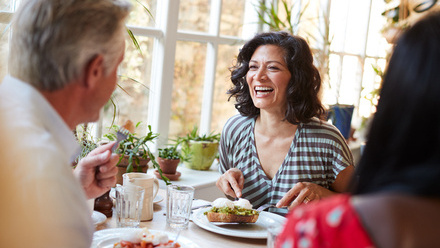There are many great reasons to cycle regularly. Penny Hunking explains how beneficial riding a bike can be for you – and the planet too.
Riding a bike regularly can provide significant benefits to your health. It’s an excellent, low impact form of exercise that you can easily fit into your daily life such as cycling to the shops, or transporting you to work. It’s social and easy for almost anyone to do. It gets you out into the open air which can have added health benefits too. So, what are you waiting for? It’s time to get on your bike!
The rise of cycling and the effect on the environment. Following the London Olympics in 2012 and the success of Team GB cyclists, there’s been a significant rise in the number of people taking up cycling. This has been called ‘the Olympic Cycling Effect’. More children have taken up cycling and cycling for fun with family and friends has become much more common. Regular cycling has health benefits for the cyclist and, where this replaces car journeys, can help enhance the environment too. Using a bike instead of the car helps to reduce carbon emissions which are thought to contribute to global warming.
In addition, vehicle air pollutants are also reduced. Air pollution is currently estimated to reduce the life expectancy of every person in the UK by an average of 7-8 months, with estimated equivalent health costs of up to £20 billion each year. Air pollution also has a detrimental effect on our ecosystems and vegetation. Cycling rather than driving can play a part in improving our environment. much to be done. At the forefront is the Mayor of London with the ambition for Londoners to walk or cycle for at least 20 minutes every day. In 2017, only 34% of Londoners managed to do this on any given day, so the blueprint for a healthy London is to put increased physical activity at the centre of a wide range of Greater London Authority and Transport for London policies.
Cycling is for everyone
Cycling is fun and social and almost anyone of any age can ride a bicycle without too much trouble. Families can spend time cycling together and friends can meet to cycle off for the day. Some people may be happy to ride on their own, but others want to cycle with others. Look out for local groups and meets in your home town and visit the Cycling UK website. Cycling UK has hundreds of Member Groups across the UK offering thousands of rides and events for all abilities. Every Cycling UK member can ride with any Member Group and non-members are always welcome to try out riding with a Cycling UK group.
Consider taking a cycling training course, whether you are new to cycling, or you haven’t cycled since childhood. It will give
you the knowledge and confidence you need to cycle safely. There are plenty of local courses throughout the UK and you can phone the National Cycling Training Helpline on 0844 736 8460/8461 for more information.
What kit do you need for cycling?
Helemt: It’s not a legal necessity but consider wearing a cycling helmet to help prevent a head injury if you fall off your bike. Check your helmet conforms to British Standards - look for BSEN1078 or even better a Snell Foundation B90 (or higher) sticker. Try on before you buy and make sure it fits well.
Your bicycle: Keep your bicycle in tip top condition and service it annually. Consider enrolling on a basic bike maintenance course at your local bike shop to learn how to do it yourself. Working brakes are a necessity so check them regularly and ensure the cables to the brake levers are not frayed.
Be visible: Ensure that you can be seen by motorists so consider wearing a high visibility jacket/top.
A good bike lock: Always lock your bike to a fixed cycle rack or object if you want it to be there when you return!
Water bottle: Especially in hotter weather.
Lights and the law
The Road Vehicles Lighting Regulations say that if you ride outside of daylight hours, as you probably would do when commuting to work in the winter months for example, it’s compulsory to use lights. You must have a white front light, red rear light and a red rear reflector. Each pedal needs to have amber reflectors on the front and back and you will be seen better if you fit reflectors to the spokes. Flashing bicycle lights are allowed, provided the light flashes between 60 and 240 times per minute.
One final note
Cycling is an excellent form of exercise and can fit in well with daily routines and everyday life. Most people know that riding a bike is healthy but it’s so much more than that; it’s fun and social and helps the environment too.
Author Bio
Penny Hunking RD, and Editor of Eating Well, Living Well, loves life, food and keeps regularly active. For many years, Penny taught a regular programme of fitness and exercise classes. These days she still practices what she preaches and can regularly be found in the gym, at the lake or walking and cycling (preferably along bridal pathways and local canal and river routes) around her local area.







